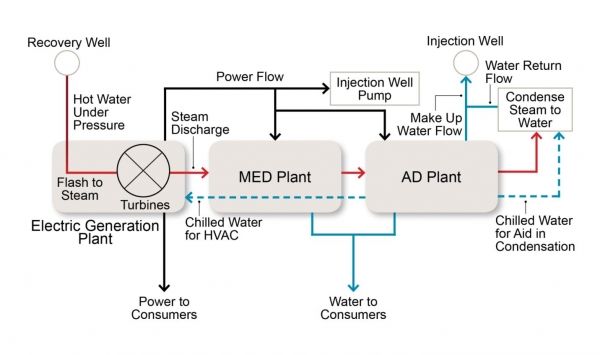Water shortages are hitting some areas of the world hard, and with increasing global temperatures, more regions may be experiencing drought conditions.
Countries such as Saudi Arabia rely on desalination plants to provide drinking water to their residents, producing 5 million cubic meters of desalinated water per day. The method requires a high amount of energy, which can limit the use of the process in many parts of the world.
Researchers have been working on using renewable energy sources such as solar and wind to power desalination plants, and reduce the need for traditional, fossil fuel-powered methods. Now, new research presents an untapped resource for powering desalination: geothermal energy.
“We’re searching the world right now for better methods, low carbon methods, to create energy,” says Thomas Missimer of Florida Gulf Coast University. “We want electricity that’s generated at base load—in other words, generated 24 hours a day without interruption. Geothermal is one of those types of energies.”
Read more at Geological Society of America
Image: Diagram of how the geothermal energy would be used for energy production, and two types of desalination (MED and AD). Red lines indicate hot water, while blue lines are cooled water. At the end of the process, distilled water would be available for consumers and aquifer storage, and the chilled water could be used in air conditioning for the plant. The whole theoretical system is carbon-neutral.
CREDIT: Courtesy of Thomas Missimer


